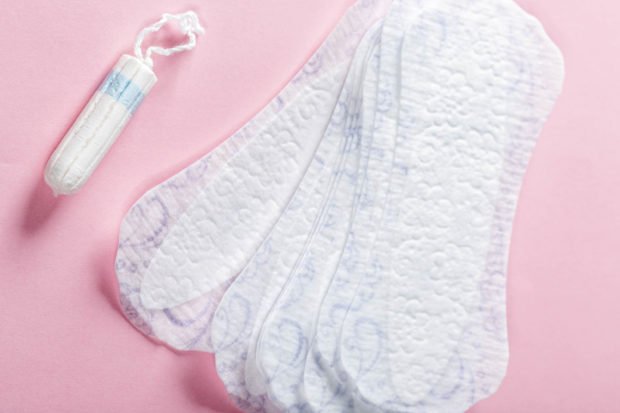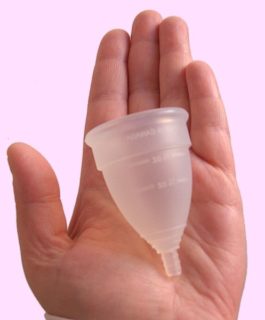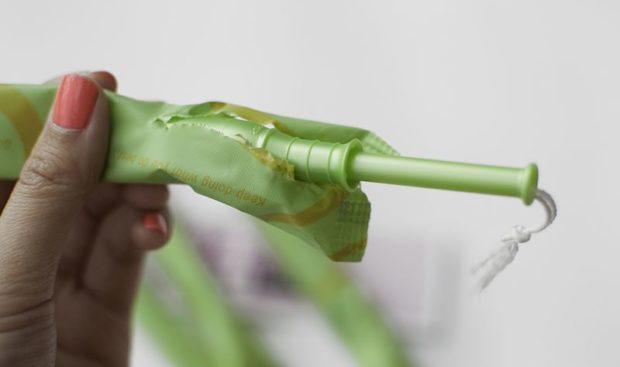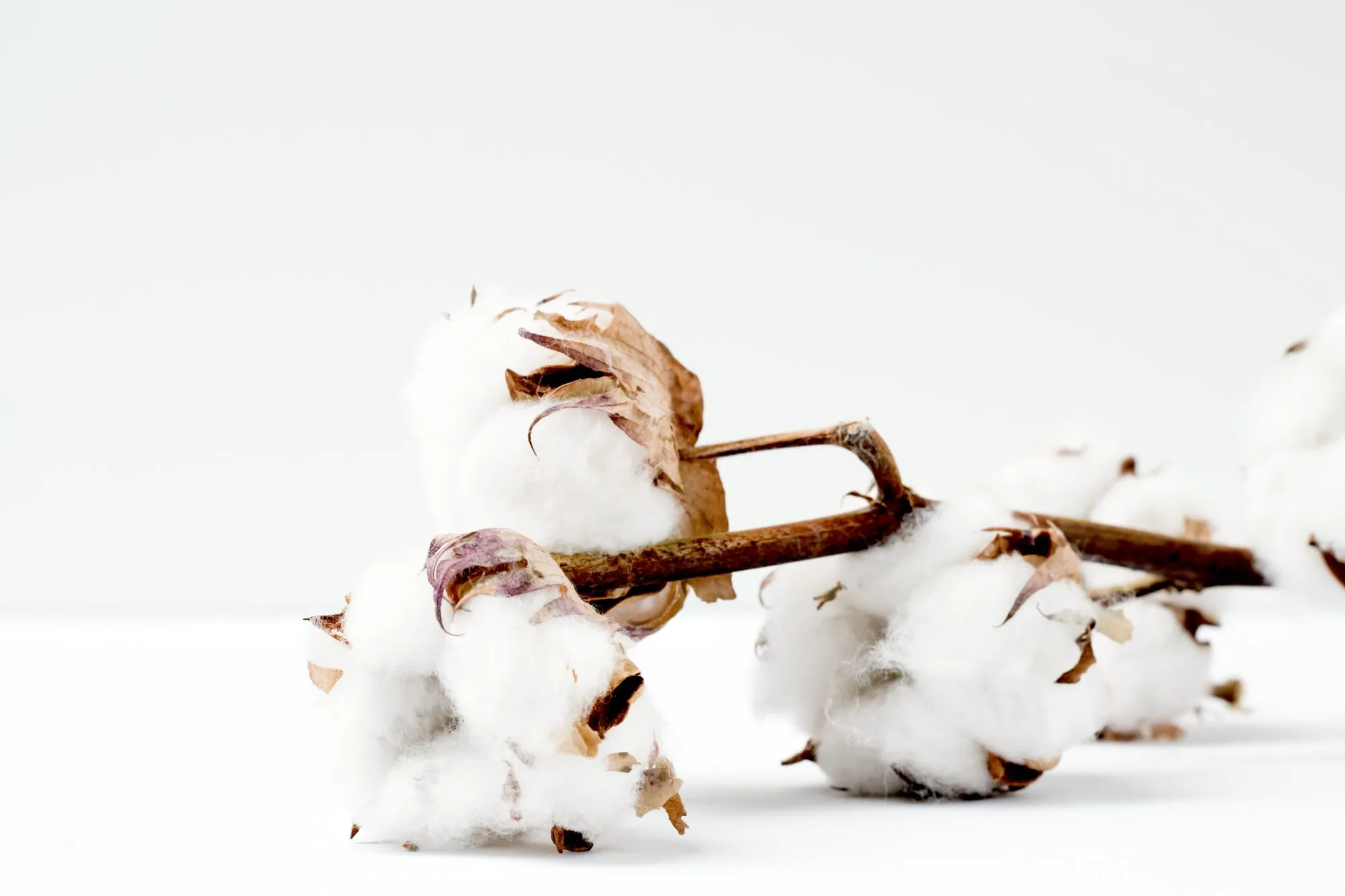The word organic has become synonymous with good health, especially when it comes to food produce and beauty products. That said, women are increasingly on the hunt for healthier, feminine hygiene products, including organic tampons. But are they really healthier and worth the additional price?
Following in the footsteps of brands such as Cora and Seventh Generation, feminine hygiene brands Tampax and Always recently introduced a new line of organic products called Pure. These pads and tampons are made from organic cotton. They are also being advertised free of dyes, fragrances, and chlorine bleaching. Furthermore, their applicators are set to be composed of a 90% plant-based material.
What’s the difference between regular and organic tampons?
Organic tampons are often made from 100 percent organic cotton. Whereas regular tampons are either made of non-organic cotton or rayon (a substance made from wood pulp). In order to give off that bright-white color, regular tampons are made from rayon and are often bleached with chlorine. Many of these products are then scented. Their applicators and strings are also finished off using plastic.

Organic tampons are appealing because they’re free from dyes, plastics, bleach, and fragrances.
Are non-organic tampons dangerous?
As mentioned, many regular tampons contain fragrances and other chemicals linked to the bleaching process. There is some debate over whether this process can affect women’s health. Do tampons contain harmful chemicals that can cause endocrine disruption?
Dioxins
According to the World Health Organization, dioxins are toxic compounds that have been linked to endocrine disruption as well as cancer (1). In the past, rayon was bleached using chlorine gas. This process would then produce dioxins as a by-product.
However, according to the FDA, this method of bleaching is no longer in practice. Instead, elemental chlorine-free or totally chlorine-free bleaching processes are now being used. Hence, only trace amounts of dioxins are likely to be found in tampons. Furthermore, the FDA requires that tampon manufacturers monitor dioxin levels. This suggests safety issues are being monitored.
A study published in the Environmental Health Perspective Journal also reported that the majority of dioxin exposure was as a result of dietary exposure and food choices.
Fragrances
Fragrances used in tampons can irritate the skin. Tampons don’t have to be organic to be unscented. There are many regular tampons that are unscented. It is all a matter of preference and women have choices.
Pesticides
If there’s one reason why you should switch to organic tampons, the risk of pesticide exposure is the biggest reason for them all.
Pesticides are the farming substances used to protect large quantities of crops from insects and other organisms. Unfortunately, exposure to pesticides has been linked to cancer, hormone disruption, cognitive decline, and even autism spectrum disorder.

An independent, non-peer-reviewed study found traces of pesticides in regular tampons. Furthermore, a separate study from the University of La Plata in Argentina found glyphosate in 85% of the tampons tested. For those who do not know, glyphosate is a popular herbicide found in Monsanto’s RoundUp weedkiller. The World Health Organization also cited it as a likely carcinogen.
A California jury recently ordered Bayer, owner of Monsanto, to pay more than $2 billion in punitive and compensatory damages to the Barton couple. John Barton, now 70, retired from farming in 2010 and was planning to move to northern Idaho with his wife. But when he was diagnosed with non-Hodgkin lymphoma in 2015, he concluded that the herbicide he depended on for decades had caused the swollen lymph nodes that have since destroyed his health.
If you consider all the above facts, it would make sense to switch to organic tampons, right? Well, not exactly. Firstly, your main risk of glyphosate exposure is through food, not through your tampons. Secondly, more studies still need to be done to better determine how many pesticides are in a tampon and if this amount can be toxic to human health.
Sustainability
When it comes to conscious consumerism, the word organic is a buzzword. Those who purchase products that have the term on their labeling believe that they’re doing the environment a just service. While often true, opting for organic cotton over regular cotton may be worse for the environment than you think.
Organic cotton is not genetically modified, it requires more land and water to produce an equivalent to regular cotton. That said, more research is still needed to validate these claims.
However, organic tampons are biodegradable and anything biodegradable is a win in our books. Furthermore, unlike some feminine hygiene products that use plastic applicators, the new Tampax Pure brand uses an applicator that is composed of a 90% plant-based material.
Toxic shock syndrome
Toxic Shock Syndrome (TSS) is a concern for many women who use tampons regularly. It is a rare and life-threatening condition. TSS occurs when a toxin is produced due to an overgrowth of bacteria. It can also lead to organ failure.
The vaginal flora may become infected with a strain of Staphylococcus aureus (S. aureus). Once the levels of the bacterium are high enough, then it produces the TSST-1 toxin that causes TSS. The risk of TSS increases when women leave their tampons in for too long.

Symptoms of TSS include fever, vomiting, rashes, diarrhea, nausea, headaches, seizures, and redness of the eyes. With the underlying fear of TSS, organic tampons have grown in popularity due to claims that using them lowers the risk of TSS. Yet, some studies have disputed these claims.
What do the studies say?
A study published in the journal Applied and Environmental Microbiology revealed the material of a tampon did not influence one’s risk of TSS.
The researchers tested 11 types of tampons (of different absorbencies) and four different menstrual cups. The products were tested in a laboratory that reproduced the conditions inside the vagina.
What were the results?
Results revealed that the use of organic tampons did not decrease one’s risk of TSS. Gerard Lina, professor of microbiology at the University of Claude Bernard in Lyon and lead author of the study, explained: “Our results did not support the hypothesis, suggesting that tampons composed exclusively of organic cotton could be intrinsically safer than those made of mixed cotton and rayon.”
In fact, Lina revealed that the growth of bacteria was encouraged by the presence of oxygen. The cotton-only tampons had more space between the fibers. This allowed more air to pass into the vagina. This then encouraged staph growth and toxin production.
“We observed that the space between the fibers that contribute to the intake of air in the vagina also represents a major site of S. aureus growth and TSST-1 production.” She said in a statement.
Meanwhile, menstrual cups were also associated with higher growth of bacteria, most likely from the amount of excess air that infiltrated the vagina.
Having said all this, it is important to remember that TSS is incredibly rare. You are only likely to get it if you do not regularly change your feminine hygiene products.
Should you switch to organic tampons?
At this point, it is a matter of personal preference. There are some compelling reasons to use organic tampons. The fear of pesticides, exposure to glyphosate, and biodegradability is enough to convince me that organic tampons are a good investment. So long as you’re prepared for your wallet to take a bit of a hit.
If you’re looking for another option free from pesticides, fragrances, and kinder on the environment and your wallet, then menstrual cups and even menstrual underwear are a consideration.



![women [longevity live]](https://longevitylive.com/wp-content/uploads/2020/01/photo-of-women-walking-down-the-street-1116984-100x100.jpg)










